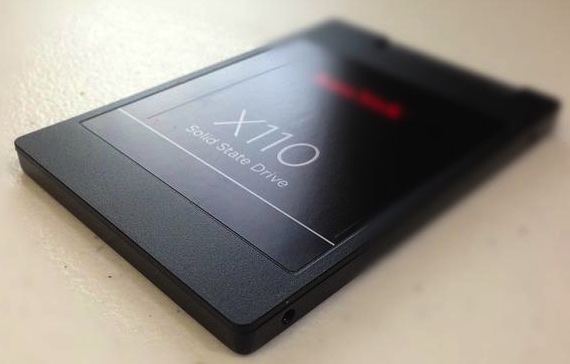SSD Market to Rise at CAGR of 41% Between 2015 and 2022 – Transparency Market Research
Reaching $229 billion by end of 2022
This is a Press Release edited by StorageNewsletter.com on September 26, 2016 at 3:48 pmSSDs are gradually emerging as preferred digital storage devices over HDDs.

SSDs come with numerous advantages due to which they are gaining significant traction in the market.
Due to the increasing implementation across various handheld devices, Transparency Market Research (TMR) projects the global SSD market to rise at a CAGR of 40.7% between 2015 and 2022 in a report entitled Solid State Drive Market – Global Industry Analysis, Size, Share, Growth, Trends and Forecast 2015-2022 ($5,795).
Despite lucrative growth prospects, the high price of SSD is expected to limit their sales to an extent. Nevertheless, technological breakthroughs are expected to reduce the cost of SSDs in the near future. This will further help augment growth witnessed by the global SSD market.
The global SSD market stood at $15.4 blilion in 2014. The market is expected to reach $229.4 blilion by the end of 2022.
Rising Incorporation of SSDs in Mobile Devices
Emerges as Significant Market Driver
“The rising use of SSDs for manufacturing the latest models in mobile devices will emerge as a crucial driver for the global SSD market,” said a TMR analyst.
The mobile phone industry is incorporating SSDs to improve the performance of mobile devices and reduce the application launch time, thus boosting the speed of the devices.
The intrinsic benefits of SSDs are encouraging players such as Apple, Inc. to incorporate SSDs in mobile devices manufactured by them.
The use of SSDs as primary storage in hand-held devices such as notebooks and ultraportable computers and gadgets has therefore increased considerably.
“Currently HDD manufacturers enjoy a greater share of the demand; however, performance benefits offered by SSDs will soon influence the HDD market’s trajectory,” added the TMR analyst.
Unlike SSDs, which store information in a microchip, HDDs have mechanically designed moving parts that make them vulnerable to damage. Moreover, SSDs consume lesser power and provide high-performing features such as error correction, garbage correction, read-write caching, and encryption. The compact form factor has worked well for SSDs enabling them to be fitted into smaller spaces. The growing knowledge regarding benefits offered by SSDs over HDDs will thus bolster demand for the former in the forthcoming years.
Besides this, TMR expects the use of SSDs to considerably increase among cloud providers aiming to scale up their operations and performance. They find these factors beneficial, creating positive growth opportunities for the global SSD market.
Demand for Enterprise SSDs to Rise at Higher Pace
as Enterprises Look towards Performance Improvement
By end user, the global SSD market is bifurcated into client SSD and enterprise SSD. Of these, the client SSD segment dominated the global SSD market in 2014. The term client SSD is used to differentiate between SSDs produced for enterprise use and those produced for consumers. This segment includes SSDs used in notebooks, consumer tablets, and desktops PC. The compact form factor of client SSDs renders them perfectly suitably for notebooks, which demand a thinner and lightweight body, high performance, and longer battery life.
Presence of Several Leading Players Makes AsiaPac Key SSD Market
Currently, AsiaPac leads the global SSD market. China, Taiwan, and Japan have been identified as the most lucrative markets for solid state drives in Asia Pacific. The region features the presence of several leading SSD vendors such as Micron Technology, SanDisk Corporation, Samsung Electronics Co., Ltd., Toshiba Corporation and others, which explains the strong potential of the region. Furthermore, demand for laptops and advanced mobile devices is surging rapidly in countries such as Japan, China, and South Korea.
Besides demonstrating a large consumer base, AsiaPac is also emerging as a lucrative manufacturing base for electronics. For instance, India and China in particular have become manufacturing centers for companies such as Dell, Acer, and HP. Spurred by these factors, TMR expects the AsiaPac SSD market to expand at a 42.5% CAGR in terms of revenue from 2015 to 2022.
The Middle East and Africa market is also likely to exhibit attractive opportunities for SSD vendors. The rising penetration of smartphones in the region is expected to boost demand for devices based on the flash memory technology. Since SSDs provide ideal storage solution for these devices, their demand for the Middle East and Africa is expected to rise considerably.
Besides this, the SSD manufacturers will witness strong demand in Europe and North America
However, in the near future, TMR expects demand from the enterprise SSD segment to grow at a higher pace. Enterprise SSDs are designed to perform under continuous workloads in mission critical SANs. An increasing number of enterprises requiring high data throughput across severs are witnessing performance bottlenecks. The majority of them were dependent on HDDs. To mitigate these growing concerns, many of them are considering SSDs as a more viable storage option to improve performance, efficiency, and data center reliability. According to TMR, the enterprise SSD segment will exhibit a CAGR of 76.3% between 2015 and 2022.
Some of the leading companies operating in the market are Lite-on Technology Corporation, Kingston Technology Corporation, OCZ Storage Solutions, Intel Corporation, and Western Digital Corporation, Inc.













 Subscribe to our free daily newsletter
Subscribe to our free daily newsletter

